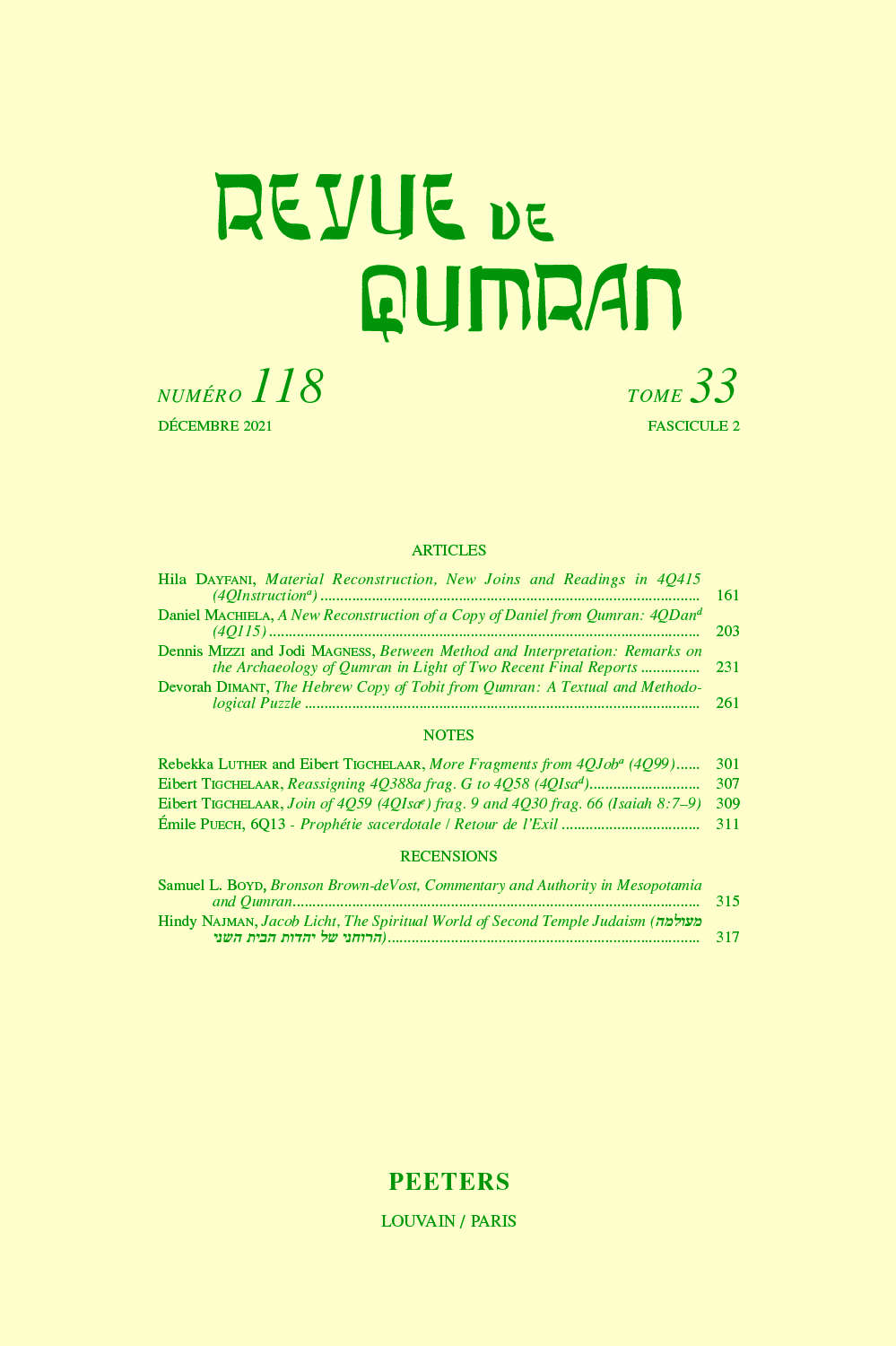 previous article in this issue previous article in this issue | next article in this issue  |

Preview first page |
Document Details : Title: A Scroll in One Hand and a Mattock in the Other Subtitle: Latrines, Essenes, and Khirbet Qumran Author(s): WERRETT, Ian Journal: Revue de Qumran Volume: 23 Issue: 4 Date: numéro 92, 2008 Pages: 475-489 DOI: 10.2143/RQ.23.4.3206539 Abstract : In the fall of 2006, dozens of humorously titled articles, such as 'Biblical Latrine: Ancient Parasites Show That Cleanliness May Have Been Next To Sickliness' and 'How Toilet Habits Killed off Dead Sea Scrolls Sect', appeared in The New York Times, The Independent, MSNBC and a variety of other mainstream publications around the world. These non-academic articles detailed the discovery of a purportedly ancient latrine to the northwest of Qumran, which, according to a recent article in Revue de Qumran by Joe Zias, James Tabor, and Stephanie Harter-Lailheugue proves that the individuals who lived at the site of Qumran during the Second Temple period were none other than the Jewish sect known as the Essenes. Based upon certain bioarchaeological evidence from the Qumran plateau, the witness of Josephus, who describes the defecation habits of the Essenes (Bellum 2.147-49), and a passage from the Temple Scroll, which calls for latrines to be built 3,000 cubits to the northwest of the 'city of the Temple' (11Q19 46.13-16; cf. Deut 23:12-14), Zias et al. claim that the authors of the Dead Sea Scrolls understood their community to be a physical replacement for the Temple (cf. 4Q174 1 2 i 6; 1QS 9.4-6) and, as such, they attempted to protect the 'city of the Temple' (i.e., Qumran) from the impurity of excrement by building communal latrines to the northwest of their habitation. In contrast to Zias et al.’s approach, which is founded upon a systematic reading of the Greek and Qumran sources, the following paper will attempt to establish the Dead Sea Scroll's position on the subject of excrement by focusing on the archaeological and literary evidence from Qumran (1QM 7.6b-7; 4Q265 6 2; 4Q472a 2-4; and 11Q19 46.13-16). In the end, it will be argued that the evidence at our disposal is inconsistent and that it cannot be used to recreate a cohesive and consistent approach on the subject of defecation at Qumran. |
|


